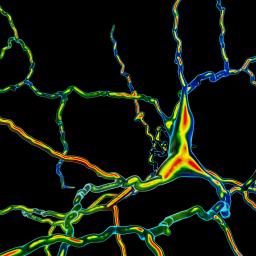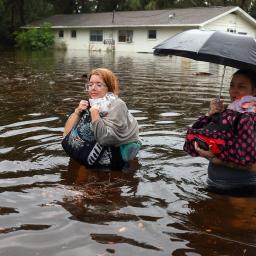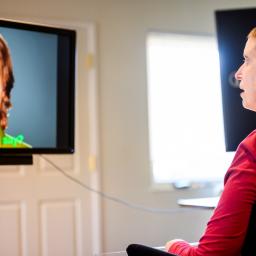 |
by Tate Ryan-Mosley on (#6EMZW)
This article is from The Technocrat, MIT Technology Review's weekly tech policy newsletter about power, politics, and Silicon Valley. To receive it in your inbox every Friday, sign up here. The US Congress is heading back into session, and they are hitting the ground running on AI. We're going to be hearing a lot about...
|
MIT Technology Review
| Link | https://www.technologyreview.com/ |
| Feed | https://www.technologyreview.com/stories.rss |
| Updated | 2025-12-16 16:19 |
 |
by Rhiannon Williams on (#6EJS8)
This is today's edition ofThe Download,our weekday newsletter that provides a daily dose of what's going on in the world of technology. What to know about this autumn's covid vaccines Many people have started testing positive for covid recently. Hospitalizations for the disease in the US rose nearly 16% during the third week of August,...
|
 |
by Cassandra Willyard on (#6EJMH)
This article first appeared inTheCheckup, MIT Technology Review's weekly biotech newsletter. To receive it in your inbox every Thursday, and read articles like this first,sign up here. Last week I came down with some kind of bug. So I got to play one of my least favorite games: Covid or Not Covid?" In my case,...
|
 |
by Rhiannon Williams on (#6EHM5)
This is today's edition ofThe Download,our weekday newsletter that provides a daily dose of what's going on in the world of technology. Zinc batteries that offer an alternative to lithium just got a big boost The news: One of the leading companies offering alternatives to lithium batteries for the grid has just received a nearly...
|
 |
by Casey Crownhart on (#6EHH8)
This article is from The Spark, MIT Technology Review's weekly climate newsletter. To receive it in your inbox every Wednesday, sign up here. I'd be willing to bet that you probably haven't spent much time thinking about the liquid that sloshes around inside batteries. But this liquid-called the electrolyte-is one of their key ingredients, and...
|
 |
by Casey Crownhart on (#6EGPZ)
One of the leading companies offering alternatives to lithium batteries for the grid just got a nearly $400 million loan from the US Department of Energy. Eos Energy makes zinc-halide batteries, which the firm hopes could one day be used to store renewable energy at a lower cost than is possible with existing lithium-ion batteries....
|
 |
by Rhiannon Williams on (#6EGFS)
This is today's edition ofThe Download,our weekday newsletter that provides a daily dose of what's going on in the world of technology. You need to talk to your kid about AI. Here are 6 things you should say. In the past year, kids, teachers, and parents have had a crash course in artificial intelligence, thanks...
|
 |
by Zeyi Yang on (#6EGD0)
This story first appeared in China Report, MIT Technology Review's newsletter about technology developments in China.Sign upto receive it in your inbox every Tuesday. Chinese ChatGPT-like bots are having a moment right now. As I reported last week, Baidu became the first Chinese tech company to roll out its large language model-called Ernie Bot-to the...
|
 |
by Rhiannon Williams, Melissa Heikkilä on (#6EFQA)
In the past year, kids, teachers, and parents have had a crash course in artificial intelligence, thanks to the wildly popular AI chatbot ChatGPT. In a knee-jerk reaction, some schools, such as the New York City public schools, banned the technology-only to cancel the ban months later. Now that many adults have caught up with...
|
 |
by Rhiannon Williams on (#6EFCR)
This is today's edition ofThe Download,our weekday newsletter that provides a daily dose of what's going on in the world of technology. Coming soon: MIT Technology Review's 15 Climate Tech Companies to Watch For decades, MIT Technology Review has published annual lists highlighting the advances redefining what technology can do and the brightest minds pushing...
|
 |
by Melissa Heikkilä on (#6EFA8)
AI language models are not humans, and yet we evaluate them as if they were, using tests like the bar exam or the United States Medical Licensing Examination. The models tend to do really well in these exams, probably because examples of such exams are abundant in the models' training data. As my colleague Will...
|
 |
by James Temple on (#6EF88)
For decades, MIT Technology Review has published annual lists highlighting the advances redefining what technology can do and the brightest minds pushing their fields forward. This year, we're launching a new list, recognizing companies making progress on one of society's most pressing challenges: climate change. MIT Technology Review's 15 Climate Tech Companies to Watch will...
|
 |
by Rhiannon Williams on (#6EEGP)
This is today's edition ofThe Download,our weekday newsletter that provides a daily dose of what's going on in the world of technology. How one elite university is approaching ChatGPT this school year For many people, the start of September marks the real beginning of the year. Back-to-school season always feels like a reset moment. However,...
|
 |
by Tate Ryan-Mosley on (#6EEE1)
This article is from The Technocrat, MIT Technology Review's weekly tech policy newsletter about power, politics, and Silicon Valley. To receive it in your inbox every Friday, sign up here. For many people, the start of September marks the real beginning of the year. No fireworks, no resolutions, but fresh notebooks, stiff sneakers, and packed...
|
 |
by Rhiannon Williams on (#6ECB1)
This is today's edition ofThe Download,our weekday newsletter that provides a daily dose of what's going on in the world of technology. A biotech company says it put dopamine-making cells into people's brains The news: In an important test for stem-cell medicine, biotech company BlueRock Therapeutics says implants of lab-made neurons introduced into the brains...
|
 |
by Antonio Regalado on (#6EC6C)
This article first appeared in The Checkup, MIT Technology Review's weekly biotech newsletter. To receive it in your inbox every Thursday, and read articles like this first,sign up here. This week, I published a story about the results of a study on Parkinson's disease in which a biotech company transplanted dopamine-making neurons into people's brains....
|
 |
by Antonio Regalado on (#6EB74)
In an important test for stem-cell medicine, a biotech company says implants of lab-made neurons introduced into the brains of 12 people with Parkinson's disease appear to be safe and may have reduced symptoms for some of them. The added cells should produce the neurotransmitter dopamine, a shortage of which is what produces the devastating...
|
 |
by Rhiannon Williams on (#6EB75)
This is today's edition ofThe Download,our weekday newsletter that provides a daily dose of what's going on in the world of technology. Chinese ChatGPT alternatives just got approved for the general public The news: Baidu, one of China's leading artificial-intelligence companies, has announced it's opening up access to its ChatGPT-like large language model, Ernie Bot,...
|
 |
by Casey Crownhart on (#6EB47)
This article is from The Spark, MIT Technology Review's weekly climate newsletter. To receive it in your inbox every Wednesday, sign up here. When I was growing up near the US Gulf Coast, it was more common for my school to get called off for a hurricane than for a snowstorm. So even though I...
|
 |
by Zeyi Yang on (#6EAFE)
Baidu, one of China's leading artificial-intelligence companies, has announced it would open up access to its ChatGPT-like large language model, Ernie Bot, to the general public. It's been a long time coming. Launched in mid-March, Ernie Bot was the first Chinese ChatGPT rival. Since then, many Chinese tech companies, including Alibaba and ByteDance, have followed...
|
 |
by Casey Crownhart on (#6EA3T)
MIT Technology Review Explains: Let our writers untangle the complex, messy world of technology to help you understand what's coming next.You can read more here. It's now possible to link climate change to all kinds of extreme weather, from droughts to flooding to wildfires. Hurricanes are no exception-scientists have found that warming temperatures are causing...
|
 |
by Will Douglas Heaven on (#6E9XP)
When Taylor Webb played around with GPT-3 in early 2022, he was blown away by what OpenAI's large language model appeared to be able to do. Here was a neural network trained only to predict the next word in a block of text-a jumped-up autocomplete. And yet it gave correct answers to many of the...
|
 |
by Zeyi Yang on (#6E9XQ)
This story first appeared in China Report, MIT Technology Review's newsletter about technology developments in China.Sign upto receive it in your inbox every Tuesday. There's something so visceral about the phrase pig-butchering scam." The first time I came across it was in my reporting a year ago, when I was looking into how strange LinkedIn...
|
 |
by MIT Technology Review Insights on (#6E92S)
The product shortages and supply-chain delays of the global covid-19 pandemic are still fresh memories. Consumers and industry are concerned that the next geopolitical climate event may have a similar impact. Against a backdrop of evolving regulations, these conditions mean manufacturers want to be prepared against short supplies, concerned customers, and weakened margins. For supply...
|
 |
by Rhiannon Williams on (#6E8VH)
This is today's edition ofThe Download,our weekday newsletter that provides a daily dose of what's going on in the world of technology. Google DeepMind has launched a watermarking tool for AI-generated images The news: Google DeepMind has launched a new watermarking tool which labels whether pictures have been generated with AI. The tool, called SynthID,...
|
 |
by Melissa Heikkilä on (#6E8VJ)
Google DeepMind has launched a new watermarking tool that labels whether images have been generated with AI. The tool, called SynthID, will initially be available only to users of Google's AI image generator Imagen, which is hosted on Google Cloud's machine learning platform Vertex. Users will be able to generate images using Imagen and then...
|
 |
by Rhiannon Williams on (#6E5GT)
This is today's edition ofThe Download,our weekday newsletter that provides a daily dose of what's going on in the world of technology. How culture drives foul play on the internet, and how new upcode" can protect us From Bored Apes and Fancy Bears, to Shiba Inu coins, self-replicating viruses, and whales, the internet is crawling...
|
 |
by Cassandra Willyard on (#6E5E9)
This article first appeared in The Checkup, MIT Technology Review's weekly biotech newsletter. To receive it in your inbox every Thursday, and read articles like this first,sign up here. This week I covered some exciting new research. Two teams reported that they used brain-computer interfaces to help people who had lost their ability to speak...
|
 |
by Charlotte Jee on (#6E4GD)
This is today's edition ofThe Download,our weekday newsletter that provides a daily dose of what's going on in the world of technology. Brain implants helped create a digital avatar of a stroke survivor's face The news: A woman who lost her ability to speak after a stroke 18 years ago was able to replicate her...
|
 |
by Casey Crownhart on (#6E4B9)
This article is from The Spark, MIT Technology Review's weekly climate newsletter. To receive it in your inbox every Wednesday, sign up here. The first time I took a road trip in an electric vehicle, I didn't mind the charging very much. I wasn't in a rush, and there was an In-N-Out Burger near the...
|
 |
by Cassandra Willyard on (#6E3MC)
What do you think of my artificial voice?" asks a woman on a computer screen, her green eyes widening slightly. The image is clearly computerized, and the voice is halting, but it's still a remarkable moment. The image is a digital avatar of a person who lost her ability to speak after a stroke 18...
|
 |
by Casey Crownhart on (#6E3H6)
Chinese battery giant CATL unveiled a new fast-charging battery last week-one that the company says can add up to 400 kilometers (about 250 miles) of range in 10 minutes. That's faster than virtually all EV charging today, and CATL claims the new cells, which it plans to produce commercially by the end of 2023, will...
|
 |
by Charlotte Jee on (#6E3E2)
This is today's edition ofThe Download,our weekday newsletter that provides a daily dose of what's going on in the world of technology. Introducing: the Ethics issue As technology is embedded deeper and further into our lives, it's becoming increasingly important for us to properly grapple with ethical concerns. For example, how do we nurture the...
|
 |
by Zeyi Yang on (#6E3B5)
This story first appeared in China Report, MIT Technology Review's newsletter about technology developments in China.Sign upto receive it in your inbox every Tuesday. The idea of downloading a third-party keyboard to your phone may seem unnecessary to most people, but in China it's the norm. Chinese is the only modern language that's logographic, meaning...
|
 |
by Allison Arieff on (#6E38T)
In Miami, extreme heat is a deadly concern. Rising temperatures now kill more people than hurricanes or floods, and do more harm to the region's economy than rising sea levels. That's why, in 2021, Florida's Miami-Dade County hired a chief heat officer, Jane Gilbert-the first position of its kind in the world. Heat has been...
|
 |
by The Editors on (#6E38S)
From The Troubled Hunt for the Ultimate Cell" (1998), by Antonio Regalado: If awards were given for the most intriguing, controversial, underfunded and hush-hush of scientific pursuits, the search for the human embryonic stem (ES) cell would likely sweep the categories. It's a hunt for the tabula rasa of human cells-a cell that has the...
|
 |
by Rebecca Ackermann on (#6E38V)
The world of online misdeeds is an eerie biome, crawling with Bored Apes, Fancy Bears, Shiba Inu coins, self-replicating viruses, and whales. But the behavior driving fraud, hacks, and scams on the internet has always been familiar and very human. New technologies change little about the fact that illegal operations exist because some people are...
|
 |
by Jon Keegan on (#6E38W)
Somewhere above you right now, a plane is broadcasting its coordinates on 1090 megahertz. A satellite high above Earth is transmitting weather maps on 1694.1 MHz. On top of all that, every single phone and Wi-Fi router near you blasts internet traffic through the air over radio waves. A carefully regulated radio spectrum is what...
|
 |
by Sofia Pronina ’26 on (#6E2VM)
Asked to picture an entrepreneur, most people will probably conjure up an image of a gray-T-shirt wearing, nonconformist college dropout. Hollywood says that to pursue entrepreneurship, you must be bold, take risks, and reject all traditional academic paths. It therefore would seem strange for MIT, first and foremost an academic institution, to encourage students to...
|
 |
by Evan Kramer, SM ’22 on (#6E2VN)
By day, Evan Kramer, SM '22, works on his PhD in the Aero-Astro Space Systems Lab, developing a satellite tasking algorithm. (His goal is to efficiently tap into a network of satellites with synthetic aperture radar sensors, which can see through all weather and illumination. This would let people quickly image a specific point on...
|
 |
by Anne Trafton on (#6E2VV)
Inspired by a technology developed thousands of years ago, MIT engineers have designed smart" sutures that can not only hold tissue in place but also detect inflammation and release drugs. The new sutures are derived from animal tissue, similar to the catgut" sutures first used by the ancient Romans. Catgut-which is made from strands of...
|
 |
by Anne Trafton on (#6E2VT)
Computational models have been a major time saver when it comes to predicting which protein molecules could make effective drugs, but many of those methods themselves take a lot of time and computing power. Now researchers at MIT and Tufts have devised an alternative approach based on an algorithm known as a large language model,...
|
 |
by Zach Winn on (#6E2VS)
Palm oil is used in everything from soaps and cosmetics to sauces and crackers, but its production can be environmentally devastating. Producers burn down rainforests and swamps to make way for plantations, decimating wildlife habitats and producing staggering greenhouse-gas emissions. A company started by MIT classmates has used synthetic biology to develop an alternative. David...
|
 |
by MIT News Staff on (#6E2VR)
The first in his family to graduate from college, Richard Smallwood '57, SM '58, ScD '62, remembers arriving at MIT certain he would flunk out. Stick it out," he recalls being urged by a teaching assistant in calculus. He did, earning bachelor's, master's, and doctoral degrees in electrical engineering. Today, he credits scholarships and fellowships...
|
 |
by MIT News Staff on (#6E2VQ)
The Great Polarization: How Ideas, Power, and Policies Drive InequalityEdited by Rudiger L. von Arnim and Joseph E. Stiglitz, PhD '66COLUMBIA UNIVERSITY PRESS, 2022, $70 Diversity and Satire: Laughing at Processes of MarginalizationBy Charisse L'Pree Corsbie-Massay '03WILEY, 2022, $59.95 The Place of the Mosque: Genealogies of Space, Knowledge, and PowerBy Akel Isma'il Kahera, SM '87LEXINGTON...
|
 |
by Simson Garfinkel ’87, PhD ’05 on (#6E2VP)
Paul Samuelson, one of the most influential economists of the 20th century, was finishing his Harvard PhD thesis in 1940 when he was offered a job in the Harvard economics department. It was only an instructorship, but Samuelson, who was already gaining an international reputation, accepted. A month into the semester, MIT offered Samuelson a...
|
by Alice Dragoon on (#6E2NY)
Wasalu Jaco, a.k.a. Lupe Fiasco, gave a lecture called Rap Theory and Practice: An Introduction" at MIT in 2022-and it quickly racked up over a million views when MIT Comparative Media Studies/Writing posted it online. The talk offered a preview of his spring semester class. Kick, Push" was the lead single on Lupe Fiasco's debut...
 |
by Charlotte Jee on (#6E2C2)
This is today's edition ofThe Download,our weekday newsletter that provides a daily dose of what's going on in the world of technology. How ubiquitous keyboard software puts hundreds of millions of Chinese users at risk For millions of Chinese people, the first software they download onto devices is always the same: a keyboard app. Yet...
|
 |
by Melissa Heikkilä on (#6E26W)
This story originally appeared in The Algorithm, our weekly newsletter on AI. To get stories like this in your inbox first, sign up here. I'm back from a wholesome week off picking blueberries in a forest. Sothis storywe published last week about the messy ethics of AI in warfare is just the antidote, bringing my...
|
 |
by Catherine Bennett on (#6E26X)
Venice, Italy, is suffering from a combination of subsidence-the city's foundations slowly sinking into the mud on which they are built-and rising sea levels. In the worst-case scenario, it could disappear underwater by the year 2100. Alessandro Gasparotto, an environmental engineer, is one of the many people trying to keep that from happening. Standing on...
|